It moves surreptitiously. Like the cockroach (below) — after which the robot is nicknamed — it is able to quietly squeeze through tiny places and withstand loads many hundred times its own body weight.
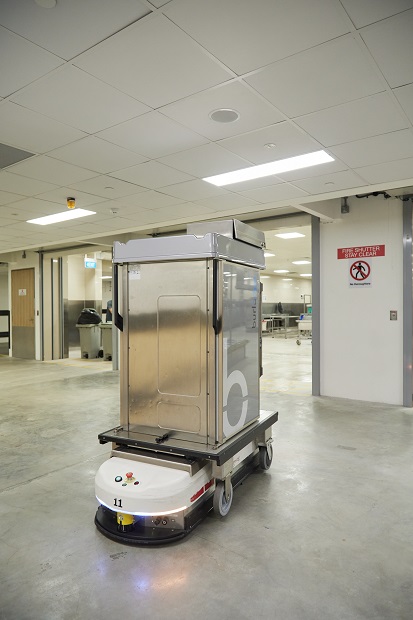
Indeed, this automated guided vehicle, one of a team used at Singapore General Hospital’s (SGH) kitchen, dips under meal trolleys, weighing some 200 kilogrammes, lifts and transports them from the kitchen to the wards.
The vehicle, giant pots that stir food automatically and newly designed food trolleys are among a slew of new equipment employed by SGH’s Food Services Department when it moved to its spanking new home in SingHealth Tower. The kitchen used to be housed in the cramped SGH Block 8. The move gave the department a chance to refresh its processes and procedures. “This is especially important as the kitchen will be serving many more patients when the new Emergency Medicine Building and Elective Care Centre are ready in coming years,” said Ms Eileen Lim (below), Senior Manager, Food Services Department, SGH.
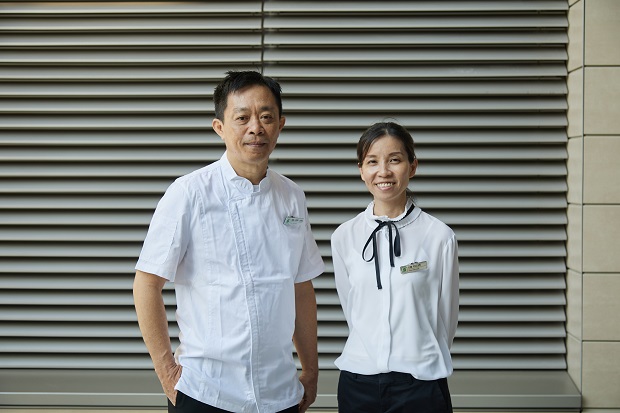
The new kitchen currently prepares some 2,000 meals three times a day — breakfast, lunch and dinner — but can be expected to add another 300 to 500 meals when new buildings within the SGH Campus are up and running. It is a tall order even with a crew of 89, who deal with everything from designing menus to preparing food. Another 36 external staff clean the kitchen after meals, including used crockery. Having equipment that does the heavy lifting goes a long way towards helping staff.
Without the automated vehicle, for instance, staff must push the heavy food-laden trolleys themselves, hook them onto a trolley truck, which is then driven through the hospital’s underground tunnels to the wards at the main SGH blocks. Like cement mixers, the pots allow chefs to cook huge vats of vegetable or to fry rice without having to do the stirring or tossing, said Mr Tan Loon Liang (above), Senior Executive Chef, Food Services Department, SGH.
The trolleys, too, have been redesigned, after feedback from ward nurses. The new trolleys have compartments to keep food hot and cold separately, so there is no need to take the cold food out when reheating the hot food at the ward. The food tray has also been redesigned to be slotted into the trolley compartments. Ward nurses just need to plug in the trolley and take the trays out for serving.
With the larger space, the kitchen is laid out with a streamlined workflow so that cooked and raw food do not come into contact. Cook-chill dishes that are cooked to be served in the following days are moved into the blast-chillers to be chilled down immediately after cooking is complete, followed by storage into food banks. On the day of serving, the dishes are placed in special ovens at the correct temperature before serving. In the old smaller kitchen, the chiller was situated behind the cooking area. So cooked food was taken to the back, then when it was ready for use, staff had to go past the preparation and cooking sections again to retrieve the food from the chiller. “In the new kitchen, the cooking process moves in a single direction, every step is forward-going. There is no backtracking, which is not ideal for food safety,” said Mr Tan.
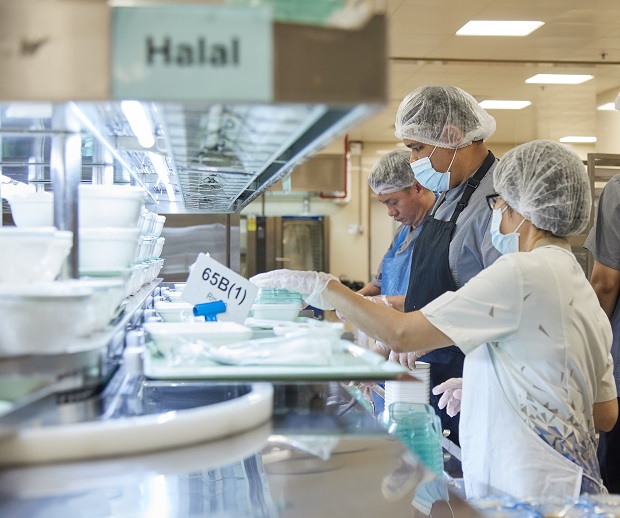
The move in August 2020 was made seamlessly after many simulation sessions to familiarise staff with the new equipment and layout. “There is more walking because the kitchen is so big, and staff even got lost! We underwent a few rounds of training to make sure that they can handle the new equipment and machines safely. We also had two rounds of full-dress rehearsal before we shifted over to prep our people on what will happen on the day of the shift itself,” said Ms Lim.
The kitchen staff, in their 20s to 60s, have adapted well to the new processes and their new mechanical workmates.
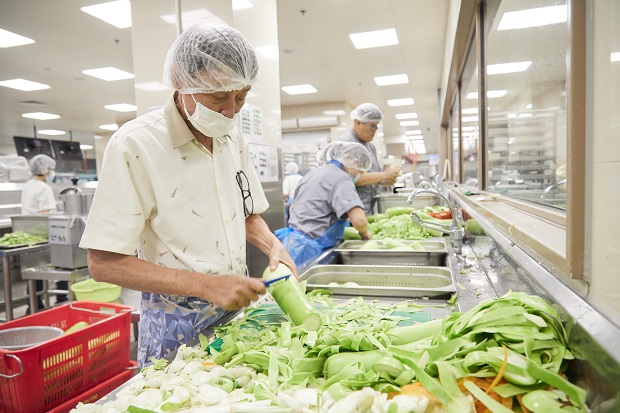
To help staff cope with the move, the department kept the menu unchanged for more than three years instead of the usual two years. A simplified menu was also used during the time straddling the shift, but the department has since settled back into its old routine, where menus are rotated fortnightly.
SGH offers its patients five types of meals — Chinese, Chinese vegetarian, Indian Muslim, Indian vegetarian, Western — that include a soft version for each. The chefs and dietitians sit down once every two years to plan a new overall menu. The kitchen is also able to cook special and therapeutic meals according to SGH dietitians’ orders.
Besides supervising the smooth running of the daily operations, the department’s executive chefs research new dishes, organise food tastings and follow up on patient feedback about the meals.
On special occasions, festive touches are added to the menu to enhance the celebratory mood. Much thought goes into the tiniest of details. For the SGH Bicentennial in 2021, the kitchen baked 1,800 soft cranberry biscuits that were served to all inpatients on 4 January, the first working day of the year.
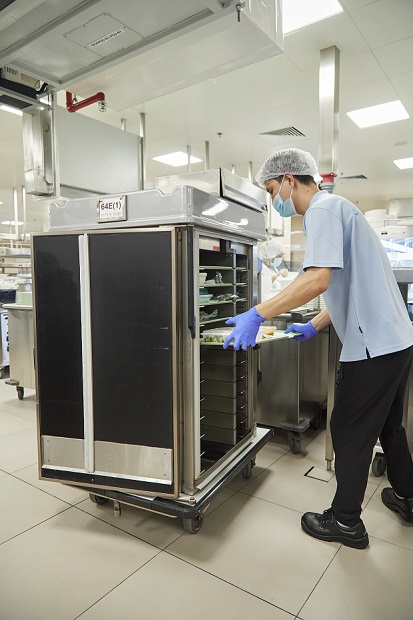
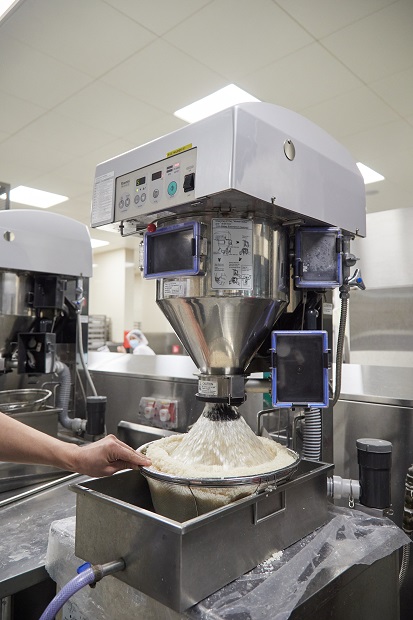
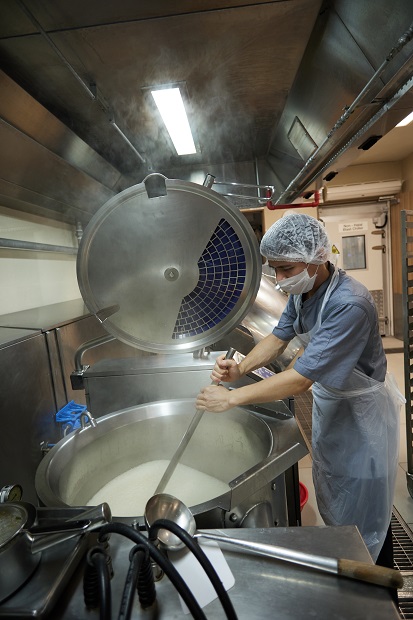
When patients get hungry at night
Dinner orders end at 4.45pm, but a standard late meal can still be ordered till 7pm.
The late meals will be sent to the hospital’s satellite pantry and dispatched to the respective wards.
No meals are served after 8pm. However, patients feeling peckish after the meal service for the day ends can ask ward nurses for snacks of biscuits and warm beverages.
Greening of the kitchen
The Food Services Department is collaborating with Environmental Services to recycle raw kitchen wastes like vegetable scraps, apple cores and over-ripe bananas for vermicomposting. Earthworms and other microorganisms break down the food wastes into compost, which is then used as organic fertiliser for SGH Campus’s gardens.
Unconsumed food is thrown away for safety reasons, but the Food Services Department is looking into the use of recycling processors like biodigesters.
Read more: Are all fruits and vegetables healthy? Is it impossible to eat healthy when eating out? Click here for answers.
Get the latest updates about Singapore Health in your mailbox! Click here to subscribe.
